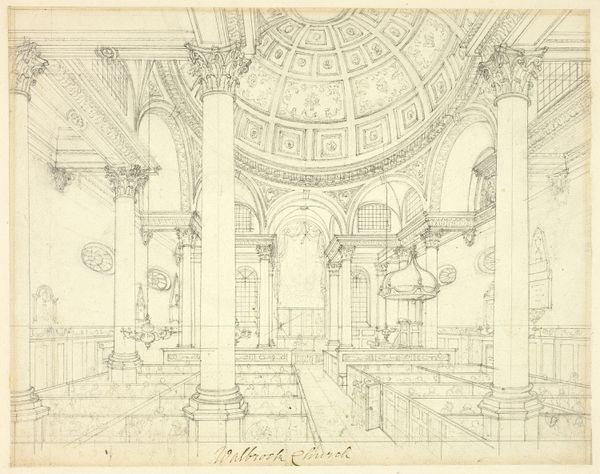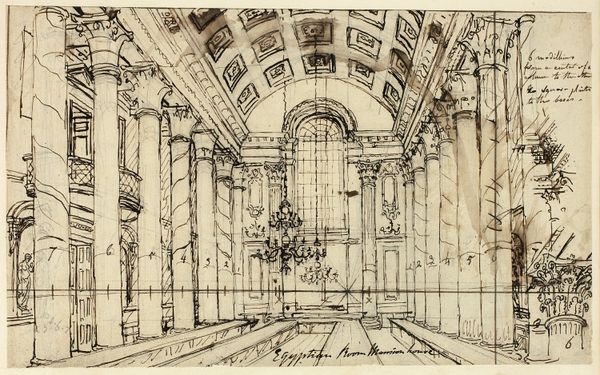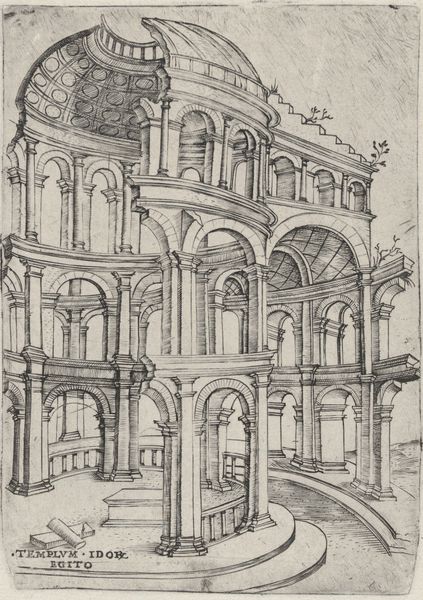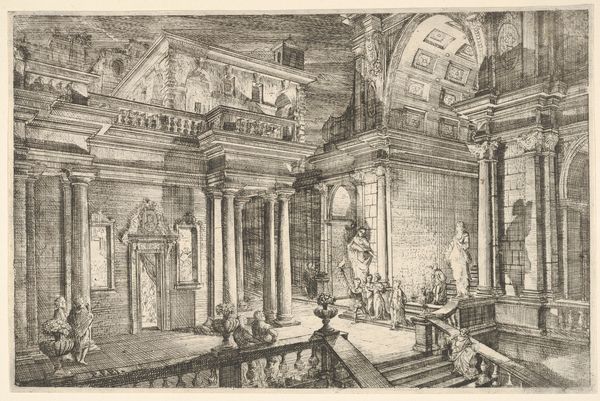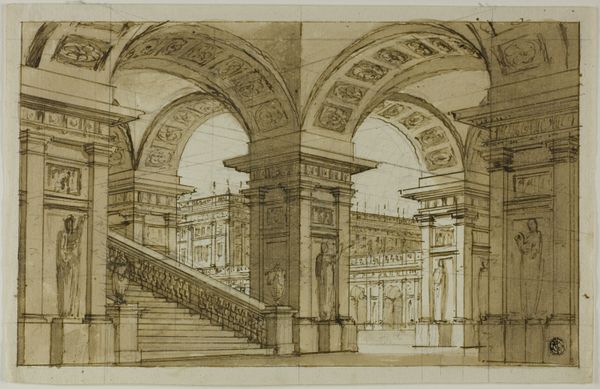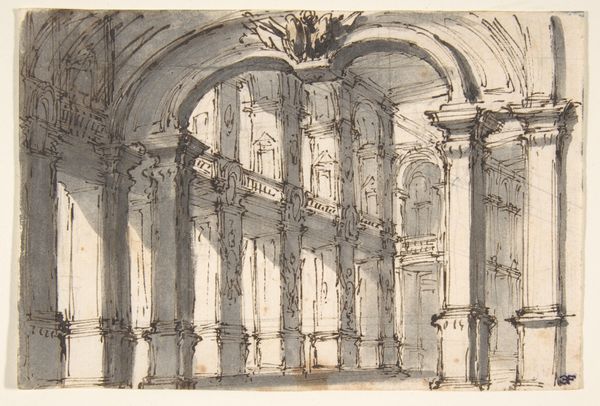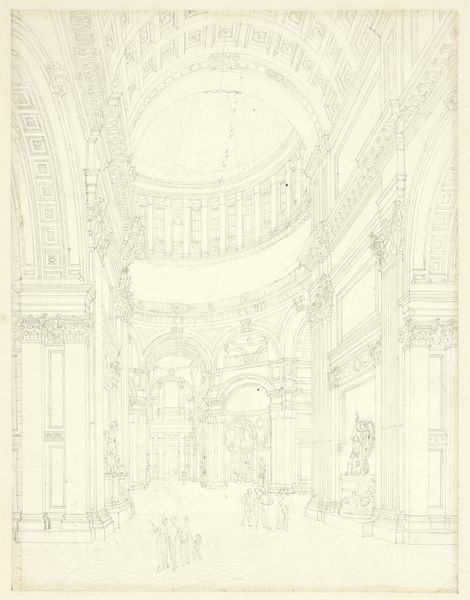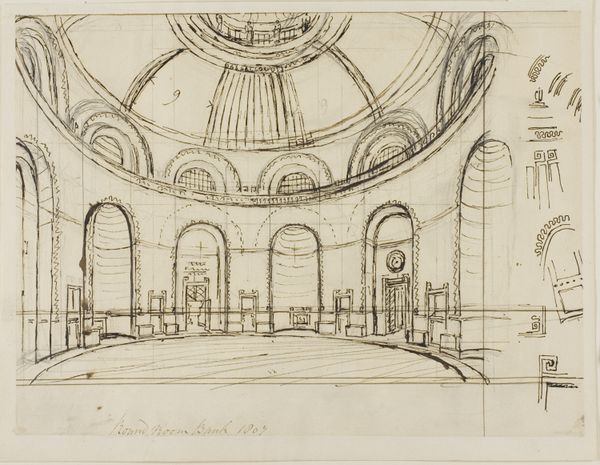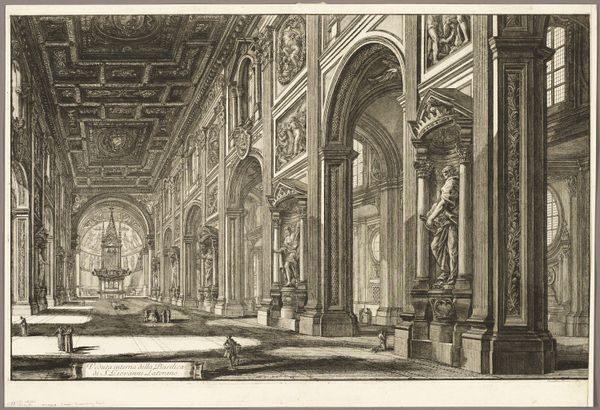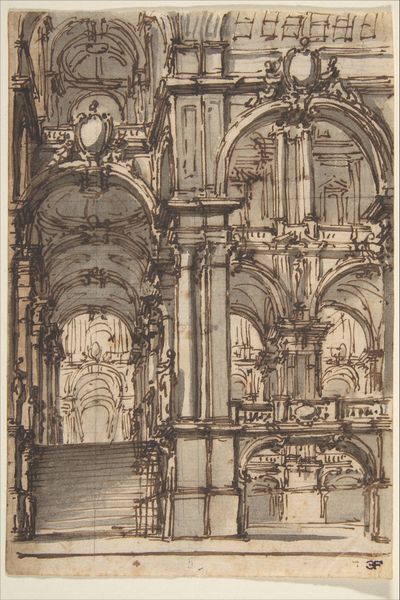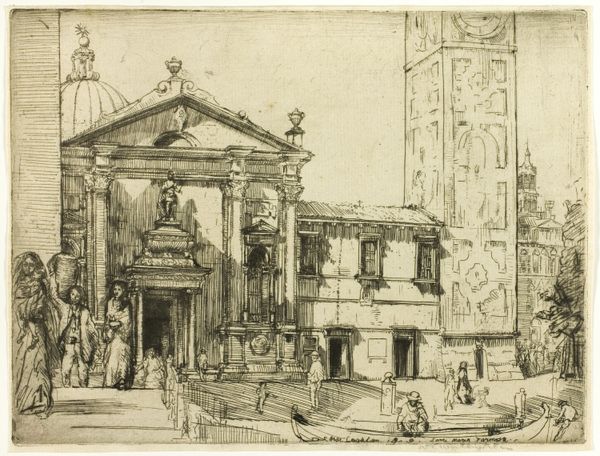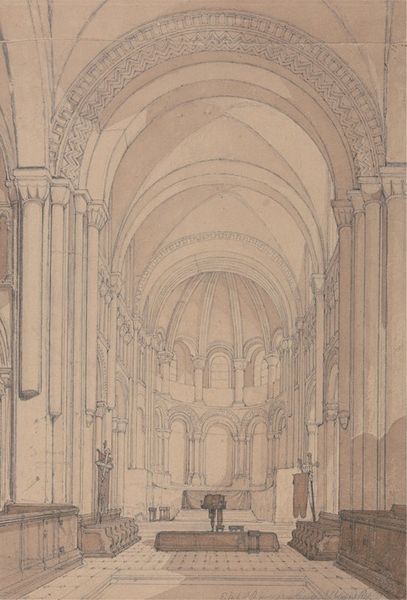
Study for Walbrook Church (recto); Sketches of Sailboats, Men and Dinghies (verso) c. 1807
0:00
0:00
drawing, print, paper, ink, ink-drawings, graphite, pen
#
drawing
#
ink drawing
#
pen drawing
#
mechanical pen drawing
# print
#
pen sketch
#
paper
#
personal sketchbook
#
linework heavy
#
ink
#
sketchwork
#
ink drawing experimentation
#
england
#
ink-drawings
#
pen-ink sketch
#
water
#
pen work
#
graphite
#
pen
Dimensions: 230 × 319 mm
Copyright: Public Domain
Editor: Okay, so this is "Study for Walbrook Church" by Augustus Charles Pugin, made around 1807. It's an ink and graphite drawing on paper, and it looks like it was sketched on both sides. What strikes me is the almost dreamlike quality, how the architecture is solid, but the lines are so loose. What do you see in this sketch? Curator: It is intriguing, isn't it? What I find compelling is the image of sacred space rendered in such a personal, almost ephemeral way. Churches, historically, are visual testaments to established power, to immutable dogma. Pugin's sketch, though, hints at something more transient, more felt than enforced. Look at the skeletal framework. Do you think he's challenging or upholding traditions through his artistic depiction? Editor: I'm not sure! It feels like he's revealing the process of building, both literally and maybe metaphorically. Like the church is constantly being imagined and re-imagined. Curator: Exactly! Consider how architectural drawings functioned at the time. They weren't just blueprints. They were arguments, visions, persuasive tools laden with symbolic intent. Pugin, here, is using line and perspective to not just represent the Walbrook Church but also to invoke certain cultural memories tied to idealized notions of ecclesiastical order. The sketch feels both reverent and critical. Editor: So, by leaving the lines open and airy, is he maybe inviting the viewer to participate in that act of imagining? Curator: Precisely. And on the other side, with sailboats and men, doesn't that juxtapose the sacred and the mundane, the grand design and the everyday action, almost reminding us of humanity within something often presented as divinely absolute? Editor: That’s a good point. I hadn't considered the verso side influencing the recto side so directly. Thanks, this was really insightful. Curator: My pleasure. It’s fascinating to see how symbols from sacred spaces become infused in art. Food for thought about how art impacts memory.
Comments
No comments
Be the first to comment and join the conversation on the ultimate creative platform.
